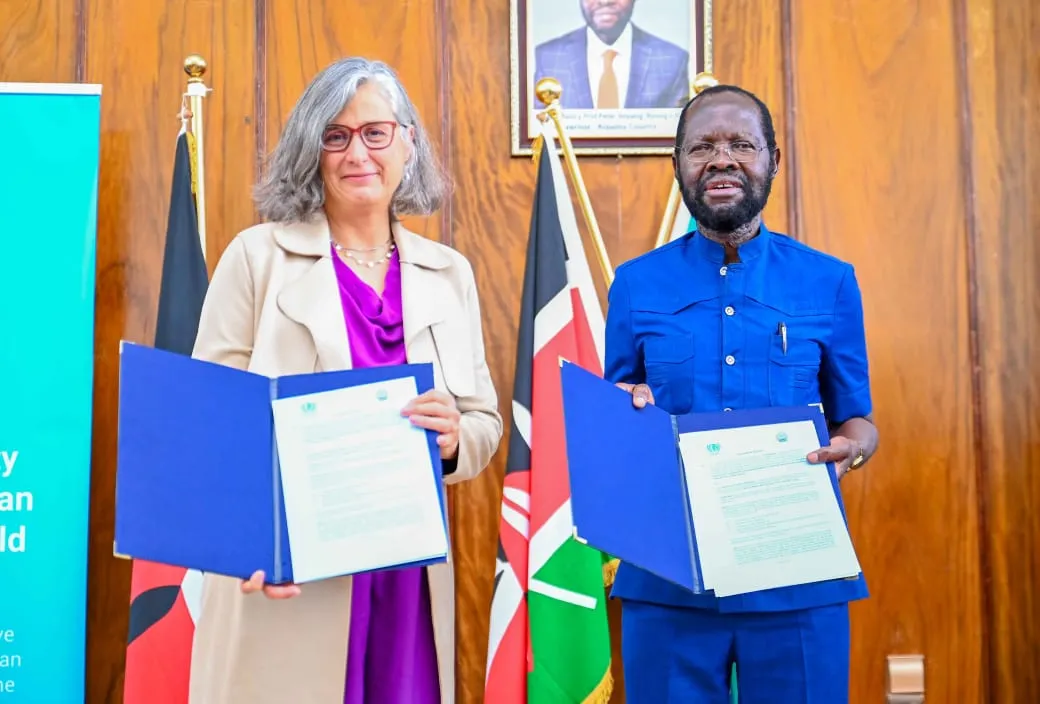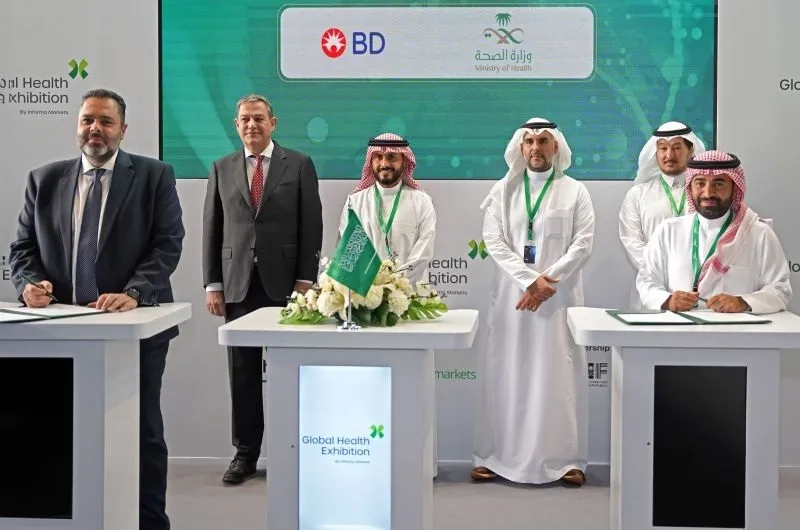Kisumu County has entered into a landmark partnership with the United Nations Human Settlements Programme (UN-Habitat) to implement an ambitious large-scale social housing upgrade programme that promises to transform urban living conditions for some of Kenya’s most vulnerable populations. The groundbreaking initiative, valued at Sh2.7 billion for implementation across both Kisumu and Nairobi, represents a significant commitment to promoting sustainable, inclusive, and community-led urban development aligned with international best practices and Kenya’s national housing agenda.
The formal agreement was sealed through a Letter of Intent signing ceremony held in Kisumu, where Governor Professor Anyang’ Nyong’o represented the county government and Anaclaudia Rossbach, UN-Habitat’s Executive Director in Kenya, signed on behalf of the international agency. This partnership operates under the framework of the Partnership for the Implementation of the New Urban Agenda (PINUA) plan, a global initiative that emerged from the United Nations Conference on Housing and Sustainable Urban Development (Habitat III) held in Quito, Ecuador, in 2016.
Push boundaries, reach goals, achieve more. Whether it’s ACCA, HESI A2, ATI TEAS 7, HESI EXIT, NCLEX-RN, NCLEX-PN, or Financial Literacy, we’ve got the Online course to match your ambition. Start with Serrari Ed now.
Strategic Alignment with Global Urban Development Goals
The New Urban Agenda represents a shared vision for a better and more sustainable urban future, providing standards and principles for planning, construction, development, management, and improvement of urban areas. By aligning Kisumu’s housing upgrade initiative with PINUA principles, the county positions itself within a global network of cities committed to addressing urbanization challenges through inclusive, resilient, and sustainable approaches that prioritize the needs of marginalized communities.
Under the comprehensive agreement, both Kisumu County and UN-Habitat commit to jointly implementing the housing upgrade project through a collaborative governance model that leverages the county government’s local knowledge, administrative authority, and community relationships alongside UN-Habitat’s technical expertise, international experience, and access to development financing. Governor Nyong’o emphasized that the initiative will primarily target vulnerable groups who have historically been excluded from formal housing markets and adequate urban services.
“The PINUA programme [is] designed to benefit the most vulnerable members of the community,” Governor Nyong’o articulated during the signing ceremony, reaffirming his administration’s unwavering commitment to fostering sustainable neighborhoods equipped with essential services that enhance quality of life, economic opportunity, and social cohesion. This focus on vulnerability reflects growing recognition among urban development practitioners that addressing the needs of the poorest and most marginalized residents is both a moral imperative and a strategic necessity for creating truly inclusive cities.
Pilot Project Implementation and Timeline
Beginning November 1, 2025, Kisumu County government, in close collaboration with UN-Habitat’s technical teams, will launch carefully designed pilot projects in two strategically selected locations: Kibuye Estate within Kisumu city and Muhoroni Sub-County, a semi-urban area facing distinct housing challenges. These pilot sites were selected based on extensive feasibility assessments, community needs analyses, and their potential to generate lessons applicable to other informal settlements throughout the county and beyond.
The project designs and implementation models have been developed through extensive public participation processes that engaged residents, community leaders, civil society organizations, and local businesses in articulating priorities, providing local knowledge, and building ownership of the transformation process. This participatory approach represents a fundamental departure from top-down development models that have historically failed to meet community needs or generate sustainable outcomes.
The comprehensive programme will focus on systematically upgrading informal settlements by providing essential social infrastructure that has been largely absent or severely inadequate in these communities. Specific interventions include construction of schools to improve educational access, sanitation facilities to address public health challenges, affordable rental housing to provide secure tenure and decent living conditions, early childhood development centers to support working parents and enhance children’s developmental outcomes, and public open spaces that foster community interaction and recreation.
Innovative Housing Models and Progressive Homeownership
A particularly innovative element of the Kisumu housing upgrade initiative is its embrace of incremental housing models that recognize the financial constraints and income volatility facing low-income families. Rather than requiring upfront payment for complete housing units—which places homeownership beyond reach for most vulnerable households—incremental housing approaches allow families to progressively build and improve their homes over time as resources become available, eventually achieving ownership of decent, secure dwellings that meet basic habitability standards.
This model aligns with how many low-income families actually build in informal settlements, where construction occurs gradually as savings accumulate, but provides technical support, planning guidance, secure tenure, and access to affordable financing that dramatically improve outcomes compared to purely informal self-building. By working with rather than against households’ existing capacities and constraints, incremental housing approaches achieve better results at lower subsidies than conventional social housing delivery models.
Anaclaudia Rossbach, representing UN-Habitat, emphasized the organization’s global commitment to driving transformative change in urban areas and positioned the Kisumu partnership within this broader strategic direction. “This partnership is crucial in advancing our new strategy, which focuses on improving housing access and digitally transforming informal settlements for everyone,” Rossbach stated, highlighting both the housing provision and digital transformation dimensions of contemporary urban development practice.
The reference to digital transformation reflects growing recognition that smart city technologies and digital infrastructure can enhance service delivery, improve urban management, strengthen community engagement, and create economic opportunities even in informal settlements. Digital interventions might include mobile payment systems for housing finance, digital land records to secure tenure, sensor-based infrastructure monitoring, and digital platforms connecting residents to services and opportunities.
Detailed Implementation Plans and Construction Specifications
Fred Omenya, UN-Habitat’s housing architect overseeing the technical dimensions of the project, provided detailed information about implementation timelines and construction specifications during the signing ceremony. According to Omenya, the pilot phase construction will commence in January 2026 with the development of two residential blocks comprising 24 housing units total in Kibuye Estate, one of Kisumu’s oldest and most densely populated informal settlements.
This initial construction phase serves multiple purposes: demonstrating viable design solutions adapted to local conditions and preferences, testing construction approaches and materials for cost-effectiveness and sustainability, building implementation capacity among contractors and county staff, and generating early wins that build community confidence and political support for the broader programme. Pilot projects in urban upgrading initiatives typically provide invaluable learning that shapes subsequent phases, making initial investments in careful pilot design and documentation extremely valuable.
The full-scale project, upon completion of all planned phases, will ultimately deliver 360 affordable housing units distributed across one-bedroom and two-bedroom configurations tailored to different household sizes and compositions. These units will remain part of Kisumu County’s rental housing stock rather than being sold, ensuring that affordability is preserved over the long term and that the public investment continues benefiting vulnerable households rather than being captured through eventual market sales to higher-income buyers.
This public rental housing model addresses a critical gap in Kenya’s housing market, where affordable rental options are severely limited and where purchase-focused housing programmes often fail to serve the poorest households who cannot access mortgage financing or accumulate downpayments even for subsidized homeownership schemes. Well-managed public rental housing provides secure, affordable accommodation for households at various life stages while allowing mobility for employment or family reasons.
Financial Structure and Construction Cost Parameters
UN-Habitat has committed to fully funding the construction costs for the Kibuye Estate component of the project, with unit costs estimated at Sh1.8 million for one-bedroom units, Sh2.4 million for two-bedroom units, and Sh2.7 million for three-bedroom units. These cost parameters reflect careful value engineering that balances construction quality, spatial adequacy, and affordability while incorporating decent finishes and basic amenities that make units livable and dignified.
Construction costs in this range are achievable through several strategies: standardized designs that reduce architectural fees and enable bulk purchasing of materials, streamlined approval processes that minimize carrying costs, use of appropriate technologies that balance initial costs against lifecycle performance, and effective project management that prevents delays and cost overruns. Affordable housing development requires relentless focus on cost optimization without compromising quality or liveability.
The financial model for the Muhoroni Sub-County component differs significantly, adopting a cooperative financial structure backed by European Union support that enables construction of up to 800 housing units of varying sizes and configurations. This cooperative approach pools resources and risks among participating households while providing access to preferential financing terms that would be unavailable to individual borrowers with limited credit histories and informal incomes.
Under the cooperative model, 20 homes will be provided free of charge to the most vulnerable families—those facing extreme poverty, disability, or other circumstances preventing any financial contribution. This ensures that the very poorest households are not excluded from the upgrading initiative. The remaining 780 units will be financed through cooperative savings and loan mechanisms that require member contributions but supplement these with concessional lending from the European Union development funds and potentially other development finance sources.
Cooperative housing models have demonstrated success in various contexts by creating solidarity among members, building financial discipline through regular savings requirements, providing peer support and accountability, and creating pathways to homeownership that would otherwise remain closed to low-income households. The Muhoroni cooperative approach draws on these proven principles while adapting them to local conditions and preferences identified through community consultations.
Build the future you deserve. Get started with our top-tier Online courses: ACCA, HESI A2, ATI TEAS 7, HESI EXIT, NCLEX-RN, NCLEX-PN, and Financial Literacy. Let Serrari Ed guide your path to success. Enroll today.
Community Engagement and Sensitive Redevelopment Approaches
Architect Omenya addressed sensitive questions about the fate of existing residents in areas targeted for redevelopment, clarifying that the project employs careful approaches designed to minimize displacement and ensure current residents benefit from upgrading rather than being excluded. “We’re not demolishing the entire Kibuye Estate. Only five blocks will be taken down to make room for two high-rise buildings, which will house half of the current residents across 24 units,” Omenya explained, emphasizing the selective nature of demolition and the priority given to accommodating existing community members.
This approach reflects international best practices in informal settlement upgrading, which emphasize in-situ upgrading wherever possible rather than clearance and relocation that disrupts livelihoods, social networks, and community cohesion. When demolition and reconstruction is necessary to achieve adequate housing standards and efficient land use, best practice requires providing affected residents with alternative accommodation, ensuring they benefit from improved housing, and maintaining existing communities to the greatest extent possible.
Omenya stressed that the project design and implementation strategy follows extensive public consultations conducted over many months to ensure the initiative reflects authentic community needs and aspirations rather than technocratic visions imposed from outside. These consultations employed various engagement methods including community meetings, focus group discussions with specific demographic groups, household surveys, and collaborative design workshops where residents provided input on housing layouts, amenities, and neighbourhood planning.
Meaningful community participation in urban upgrading projects enhances outcomes through multiple mechanisms: incorporating local knowledge about site conditions and community priorities, building project ownership that supports implementation and maintenance, identifying potential conflicts or concerns early when they can be addressed, and strengthening social capital and collective action capacity that benefits communities beyond the specific housing project.
Broader Social and Economic Development Vision
Governor Nyong’o framed the housing upgrade initiative within a broader social contract with Kisumu County residents that extends beyond physical infrastructure to encompass dignity, opportunity, economic inclusion, and social peace. “This project is about more than just housing—it’s about dignity, opportunity, and peace. By investing in secure, inclusive homes, Kisumu is demonstrating that housing for all is achievable,” the Governor declared, articulating the transformative potential of adequate housing as a foundation for human development.
This holistic perspective recognizes that adequate housing serves multiple functions beyond shelter: it provides security that enables long-term planning and investment, establishes a base for economic activity including home-based enterprises, supports health by providing protection from environmental hazards, facilitates children’s education by providing study space and stability, and contributes to dignity and social inclusion by ending the marginalization associated with informal settlement living.
The Governor’s emphasis on peace reflects recognition that inadequate housing and insecure tenure create tensions within communities and between residents and authorities, while addressing housing needs through inclusive processes builds social cohesion and trust in government. In rapidly urbanizing African cities like Kisumu, housing provision represents a critical dimension of state-society relations and a tangible demonstration of government responsiveness to citizen needs.
Implementation Challenges and Success Factors
While the Kisumu-UN-Habitat partnership offers tremendous promise, successful implementation will require navigating several predictable challenges. Coordination among multiple stakeholders including county government departments, UN-Habitat technical teams, construction contractors, community organizations, and affected residents demands clear governance structures, defined responsibilities, and effective communication channels. Past urban development projects have sometimes faltered due to poor coordination that created delays, cost overruns, and community frustration.
Financial management must ensure that the Sh2.7 billion allocated is deployed efficiently, with robust procurement processes that deliver value for money, transparent accounting that builds public confidence, and contingency reserves that buffer against inevitable cost pressures. Public financial management in complex multi-stakeholder projects requires strong systems and dedicated capacity that may necessitate technical assistance and institutional strengthening.
Community relations throughout implementation will determine whether the project is experienced as a positive transformation or a disruptive imposition. Regular communication with residents about construction timelines, temporary inconveniences, and ultimate benefits; transparent processes for selecting beneficiaries for new housing units; and responsive grievance mechanisms that address concerns quickly are all essential for maintaining community support through the multi-year implementation period.
Technical capacity within Kisumu County government to plan, oversee, and ultimately manage the expanded rental housing stock will influence long-term sustainability. The project should include capacity-building components that transfer knowledge and skills to county staff, establish effective property management systems, and create institutional frameworks for maintaining the housing stock in good condition over decades.
Regional and National Significance
The Kisumu social housing upgrade initiative carries significance beyond the county’s boundaries, offering lessons and inspiration for other Kenyan counties facing similar informal settlement challenges. Kenya’s rapid urbanization—with urban population growing approximately 4% annually—creates housing deficits that informal settlements absorb in the absence of adequate formal housing supply. The Kisumu model demonstrates viable approaches to systematically addressing these deficits through partnerships leveraging international expertise and finance alongside local governance and community engagement.
At national level, the initiative aligns with Kenya’s Affordable Housing Programme under the Bottom-Up Economic Transformation Agenda, which targets delivery of 250,000 affordable housing units annually. While national and county approaches differ in specifics, both recognize that addressing housing needs requires substantial public investment, innovative financing mechanisms, and models that genuinely serve low-income households rather than middle-class buyers.
Kisumu’s partnership with UN-Habitat also strengthens Kenya’s international development relationships and demonstrates the country’s commitment to implementing the New Urban Agenda and Sustainable Development Goal 11, which calls for making cities inclusive, safe, resilient, and sustainable. International recognition of Kenya’s urban development efforts can facilitate additional development financing and technical cooperation that accelerates progress toward housing and urbanization objectives.
Conclusion: Building Inclusive Urban Futures
The signing of the Letter of Intent between Kisumu County and UN-Habitat marks the beginning of what promises to be a transformative journey for thousands of vulnerable families currently living in inadequate housing conditions. By combining international best practices, innovative financing mechanisms, community-centered design processes, and strong political commitment, the partnership creates conditions for genuine improvement in urban living standards.
As implementation proceeds from November 2025 through the pilot phase beginning January 2026 and into full-scale delivery of 360 units in Kibuye and 800 units in Muhoroni, Kisumu has opportunity to demonstrate that dignified, affordable housing for vulnerable populations is indeed achievable through determined action and effective partnerships. The project’s success will be measured not just in housing units delivered but in transformed lives, strengthened communities, and a model that inspires similar efforts throughout Kenya and beyond.
For the families who will ultimately occupy these homes, the initiative represents more than physical shelter—it embodies hope for better futures, recognition of their dignity and rights as citizens, and tangible evidence that government and international partners are committed to leaving no one behind in Kenya’s urban transformation. As Governor Nyong’o emphasized, housing for all is not merely an aspiration but an achievable goal when political will, technical expertise, adequate resources, and community engagement align effectively toward shared objectives.
Ready to take your career to the next level? Join our Online courses: ACCA, HESI A2, ATI TEAS 7 , HESI EXIT , NCLEX – RN and NCLEX – PN, Financial Literacy!🌟 Dive into a world of opportunities and empower yourself for success. Explore more at Serrari Ed and start your exciting journey today! ✨
Track GDP, Inflation and Central Bank rates for top African markets with Serrari’s comparator tool.
See today’s Treasury bonds and Money market funds movement across financial service providers in Kenya, using Serrari’s comparator tools.
Photo source: Google
By: Montel Kamau
Serrari Financial Analyst
7th October, 2025
Article, Financial and News Disclaimer
The Value of a Financial Advisor
While this article offers valuable insights, it is essential to recognize that personal finance can be highly complex and unique to each individual. A financial advisor provides professional expertise and personalized guidance to help you make well-informed decisions tailored to your specific circumstances and goals.
Beyond offering knowledge, a financial advisor serves as a trusted partner to help you stay disciplined, avoid common pitfalls, and remain focused on your long-term objectives. Their perspective and experience can complement your own efforts, enhancing your financial well-being and ensuring a more confident approach to managing your finances.
Disclaimer: This article is for informational purposes only and does not constitute financial advice. Readers are encouraged to consult a licensed financial advisor to obtain guidance specific to their financial situation.
Article and News Disclaimer
The information provided on www.serrarigroup.com is for general informational purposes only. While we strive to keep the information up to date and accurate, we make no representations or warranties of any kind, express or implied, about the completeness, accuracy, reliability, suitability, or availability with respect to the website or the information, products, services, or related graphics contained on the website for any purpose. Any reliance you place on such information is therefore strictly at your own risk.
www.serrarigroup.com is not responsible for any errors or omissions, or for the results obtained from the use of this information. All information on the website is provided on an as-is basis, with no guarantee of completeness, accuracy, timeliness, or of the results obtained from the use of this information, and without warranty of any kind, express or implied, including but not limited to warranties of performance, merchantability, and fitness for a particular purpose.
In no event will www.serrarigroup.com be liable to you or anyone else for any decision made or action taken in reliance on the information provided on the website or for any consequential, special, or similar damages, even if advised of the possibility of such damages.
The articles, news, and information presented on www.serrarigroup.com reflect the opinions of the respective authors and contributors and do not necessarily represent the views of the website or its management. Any views or opinions expressed are solely those of the individual authors and do not represent the website's views or opinions as a whole.
The content on www.serrarigroup.com may include links to external websites, which are provided for convenience and informational purposes only. We have no control over the nature, content, and availability of those sites. The inclusion of any links does not necessarily imply a recommendation or endorsement of the views expressed within them.
Every effort is made to keep the website up and running smoothly. However, www.serrarigroup.com takes no responsibility for, and will not be liable for, the website being temporarily unavailable due to technical issues beyond our control.
Please note that laws, regulations, and information can change rapidly, and we advise you to conduct further research and seek professional advice when necessary.
By using www.serrarigroup.com, you agree to this disclaimer and its terms. If you do not agree with this disclaimer, please do not use the website.
www.serrarigroup.com, reserves the right to update, modify, or remove any part of this disclaimer without prior notice. It is your responsibility to review this disclaimer periodically for changes.
Serrari Group 2025












